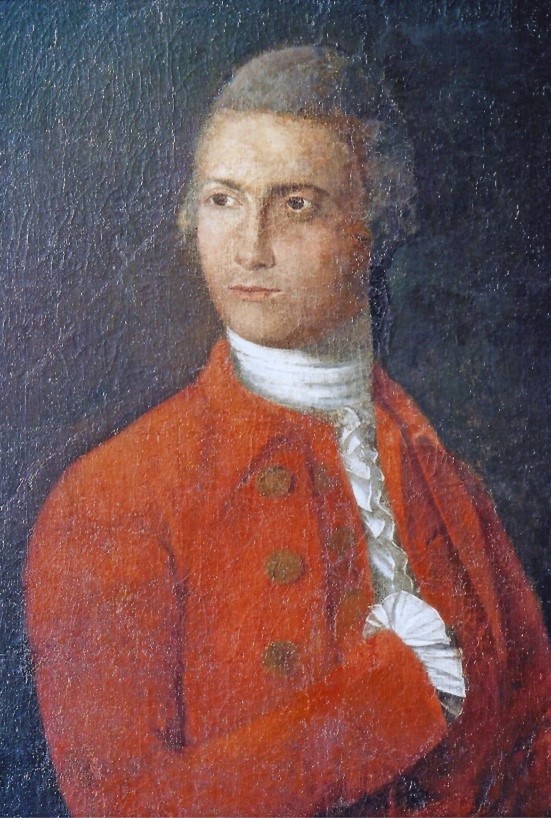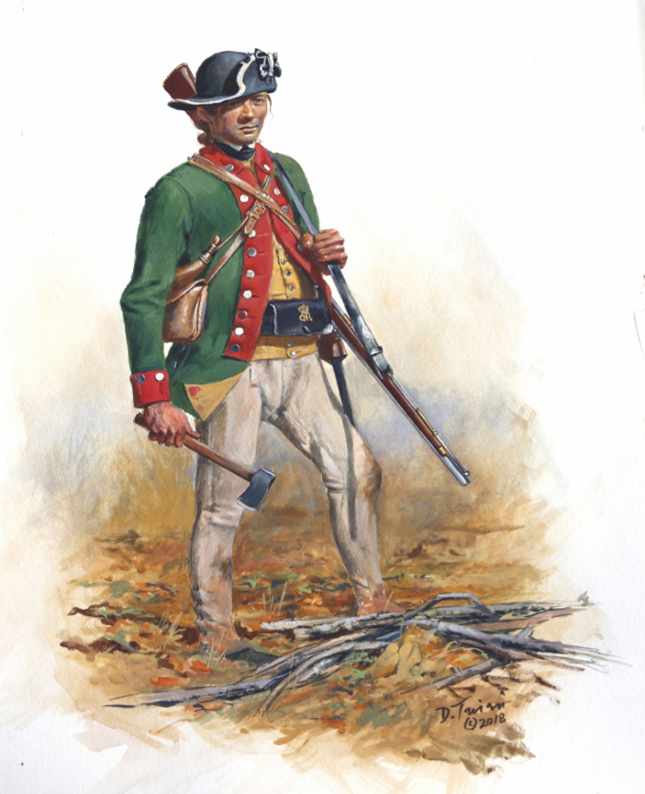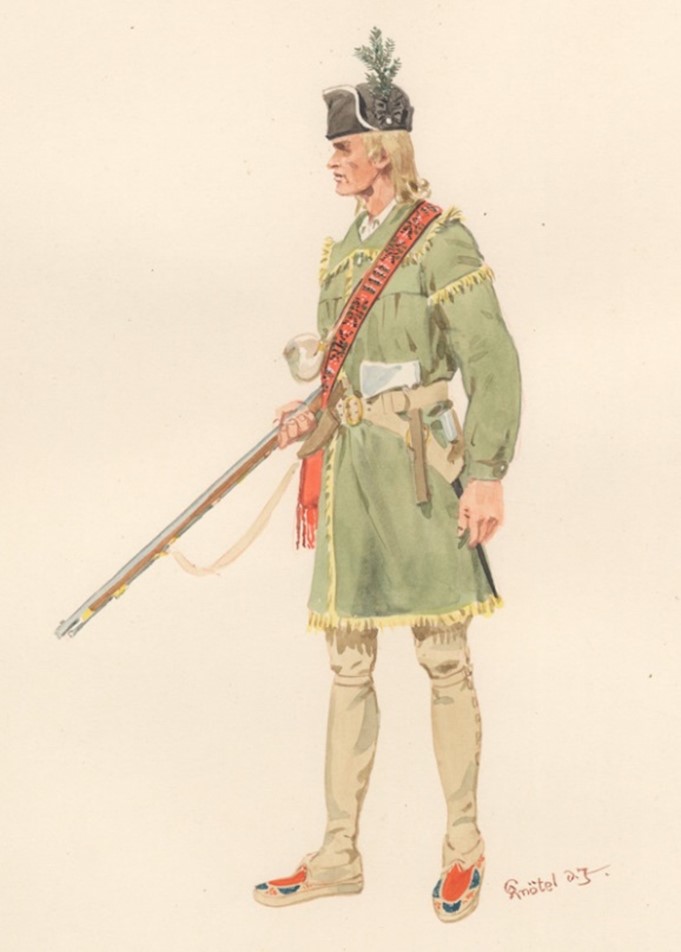Exactly when Edward Wall decided it was time to make a definite choice to support the British government and work against the rebels is unknown. His service might have started at any time after resigning from the German Flatts Committee of Safety. There were many in the Mohawk Valley loyal to the Crown who managed to quietly support the British all throughout the war. As a fur trader, Wall would have Indian allies that could deliver information he had acquired on rebel activities to Sir John Johnson in Johnstown and the Butlers in Canada. As a loyal merchant he could provide scouting and recruiting parties with food and needed equipment. As the war progressed, however, it became harder and harder for those not actively supporting the rebellion to escape the suspicions of the committees of safety. Eventually, Wall would have reached a point where he knew he had to leave to escape arrest. As is the usual case with him, for a time, Edward Wall again disappears from history.
In May of 1776, Sir John Johnson, the last remaining member of the Johnson regime in the Mohawk Valley, was forced himself to flee to Canada with around 200 of his tenants and other followers to escape arrest. On arriving in Canada, Johnson was given permission to form his followers into a Loyalist regiment to be called “The Kings Royal Regiment of New York”. Johnson began extensive recruiting to expand his regiment, and one of his first recruits was Edward Wall, listed as having joined the regiment in Quebec Province. This means that at some point in the years’ time between June of 1775 and June of 1776, Wall had been forced to go to Canada.
Image below:
Portrait of Sir John Johnson in 1772.

Wall was listed as a volunteer, which most likely means that he had enlisted as what was referred to as “a Gentleman Volunteer”. This was a man wishing to be, or showing promise to be an officer, but for who there were no officer’s commissions available at the time of enlistment. The “Volunteer” did service as a soldier in the ranks but ate and otherwise associated with the officers of the regiment until a commission became available. With no known enlistment date, we have no idea how long Wall served in this capacity, but by February of 1777, Wall was listed as an Ensign in the Major’s Company of the Kings’ Royal Regiment of New York. An “ensign” was the lowest commissioned officers’ rank, similar to today’s Second Lieutenant.
The Johnson faction had convinced General John Burgoyne that if a sizeable force of British troops arrived in the Mohawk Valley, with Johnson and his regiment in support, large numbers of Loyalists would join to support them. He and his extended family could then regain control of the Mohawk Valley for the crown. Thus, Burgoyne authorized the expedition of Colonel Barry St. Leger to support his own invasion of New York in the summer of 1777. Burgoyne would move down the Lake Champlain-Lake George-Upper Hudson River corridor to Albany, while St. Leger would come out of the western water routes from the St. Lawerence River to demonstrate British power to the Six Nation’s Indians and take Fort Stanwix from the rebels. St. Leger would then reestablish royal authority in the Mohawk Valley and join Burgoyne in Albany. To underscore just how much of a “family affair” this was, Sir John Johnson would act as St. Leger’s second in command, and Sir John’s brother-in-law and longtime Indian department officer Daniel Claus would oversee the expeditions’ Indian allies. Walls’ first patron and Uncle-in- law John Butler acted as Claus’ second in command.
The Siege of Fort Stanwix (hereafter referred to by the rebel’s name of Fort Schuyler) began on August 3, with the Battle of Oriskany occurring on August 6. It was this bloody battle that finally forced people in the Valley to fully and openly commit to one side or the other, which then tore apart families, friends, and old neighbors; civil war had come to the Mohawk Valley.
At the time of the siege, Edward Wall was an ensign in Captain Richard Duncan’s company of Johnson’s regiment, and Johnson did not draw onany men from Duncan’s company to make up thedetachments that ambushed Herkimer’s rebel militia at Oriskany. Wall was therefore spared fromhaving to shed the blood of former neighbors, customers and men he had worked alongsidewithin the committees of safety. Three of the Committee members Wall had served with died as a result of the Battle of Oriskany. this included General Nicholas Herkimer, with whom Wall haddelivered the Committee letter to Indian Superintendent Guy Johnson in June of 1775.
Image below:
A private soldier of the King’s Royal Regiment of New York, 1777.

The successful defense of Fort Schuyler ultimately led to the failure of the British invasion of the Mohawk Valley. In the wake of the Battle of Oriskany, however, the various Committees of Safety in Tryon County were in stunned disarray. Many of the principal members of the Committees had been killed or captured at the battle and the committees were flailing about to exact some sort of revenge for their losses. So, it was on August 25, 1777, that the combined committees ordered that the families of prominent Loyalists in the British invasion force “be immediately confined...in Johnstown and kept under guard, till further orders from this board.” Among thoseconfined were Colonel John Butler’s wife and younger children and Mrs. Edward Wall. It wascommon practice at the time for committees of safety to put the family members of active Loyalists under “house arrest” to use as potential hostages in the future.
Deborah Wall was not one to simply wait around forever for a potential prisoner exchange,however. On August 31, of 1778, now in “protective custody” in Albany, she appeared before the Commission for Detecting and Defeating Conspiracies. In the meeting, she requested a pass to go through the British lines and join her husband in Unadilla. No doubt Deborah approached it from a “by what right or authority do you continue to keep me under confinement when you have no evidence against me?” The committee would have been well aware however, that even Loyalists in confinement found ways to pass information to the British in Canada (the fact that Deborah knew exactly where her husband was shows how easy it was for information to be passed back and forth). They would not have been receptive to the idea of granting free passage to a wife who had been observing the goings-on of the Mohawk Valley rebels for over a year’s time, at least not without a formal prisoner exchange to give them something in return. Her request was not granted.
While Deborah’s request fell upon deaf ears, it does give us our next clue as to Edward Wall’s military service. By September of 1777, Wall had been promoted to a lieutenant’s rank in the King’s Royal Regiment of New York. It was a short-lived promotion however as he resigned it in October. Whether Wall had decided on his own to make better use of his experience in working with Indians, or he was actively recruited for it, Wall joined the British Indian Department. By 1778 he was assigned to the Six Nations/Loyalist settlement of Unadilla (modern Sidney, NY). Unadilla sat right on the 1768 boundary line dividing Indian lands from white settlers and therefore made a perfect base for the British allied Indians and Loyalists to launch their raids against the New York and Pennsylvania frontiers. It was common practice for the Indian Department to station one or two officers at the more active villages to coordinate operations between the British military and their Indian allies, and to help supply the Indians with the weapons and equipment they needed. With all his previous Indian trade experience, Wall or “Awhawhoana“ (his Oneida name-“The Great Road”) would have done well in this role.
Wall’s posting to Unadilla also gives us our one and only clue as to whether he ever directly took part in the civil war now raging in the Mohawk Valley. In the next instalment, as we continue to explore Edward Wall’s life and career, we will take a closer look at the Loyalist/Indian raid on German Flatts in September of 1778.
Image: Indian Department Officers/Rangers on active service often wore a mixture of white and Indian dress.

